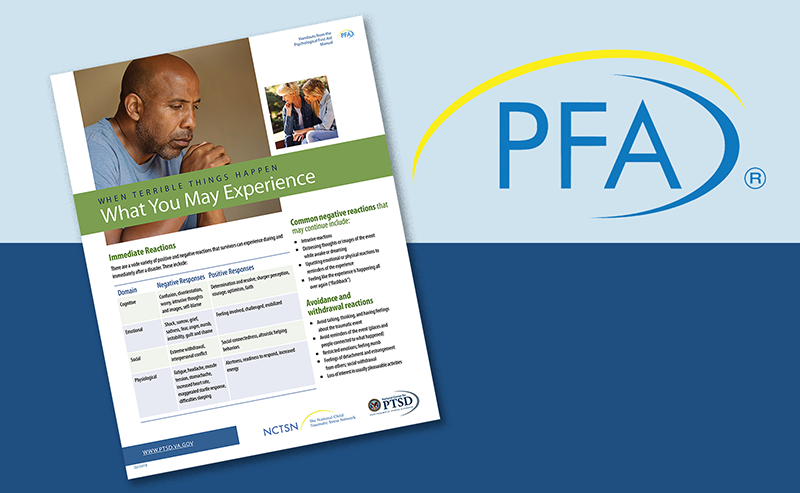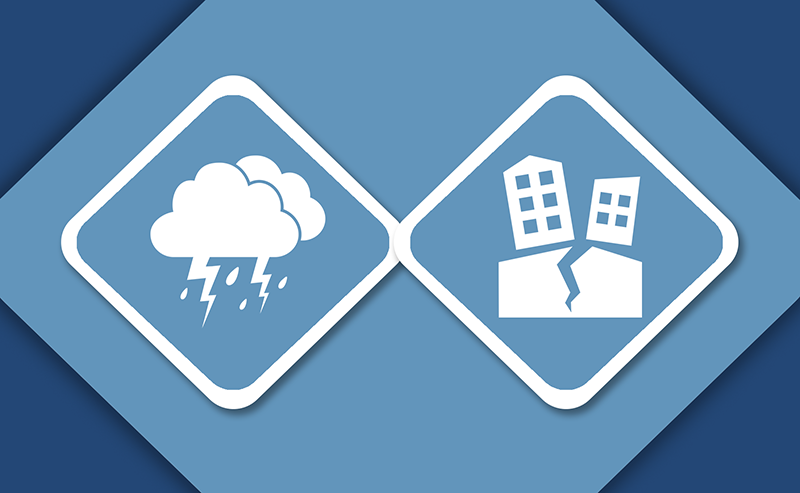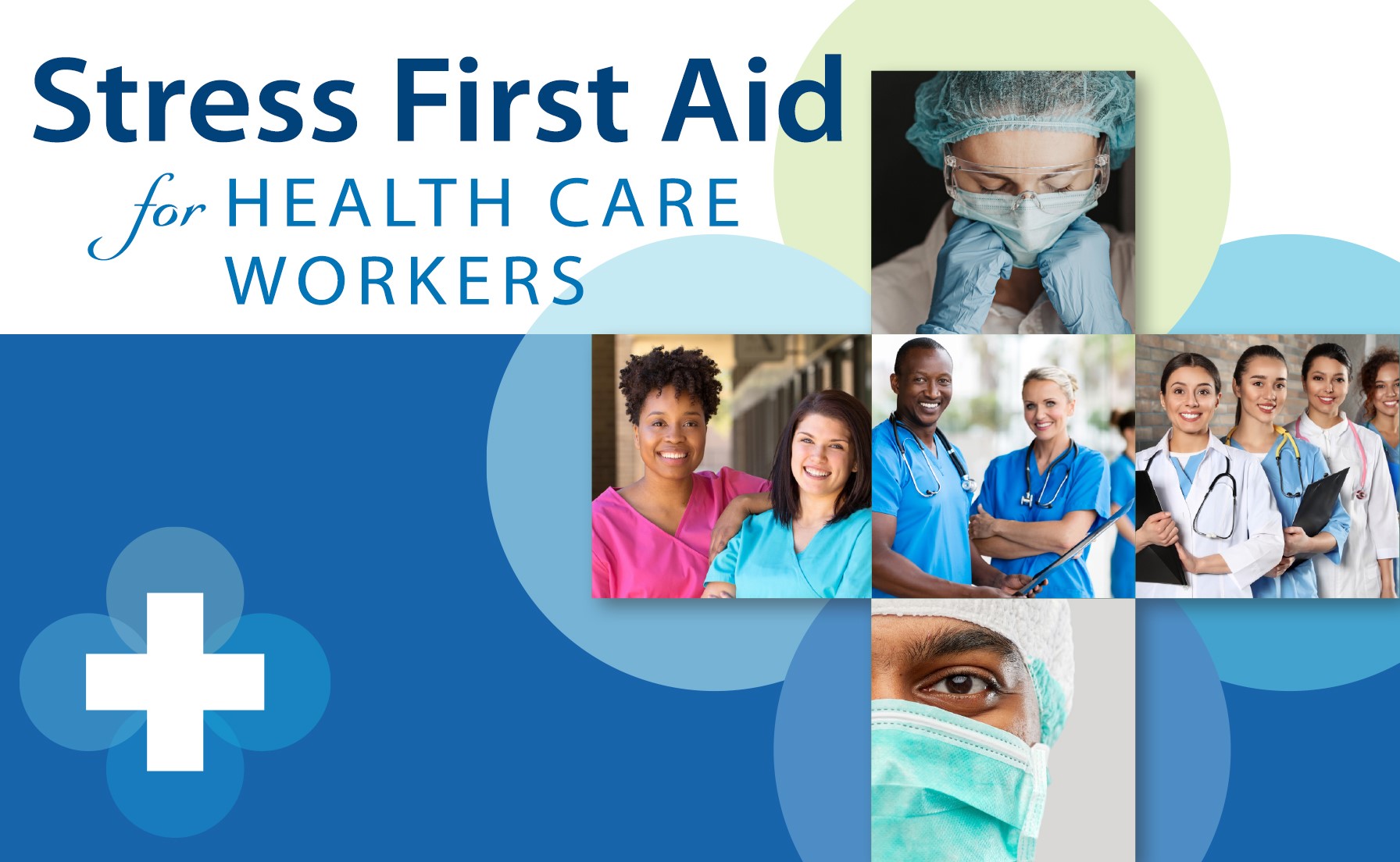PTSD: National Center for PTSD
For Community Leaders: Helping People Manage Stress Associated with Disaster Events
For Community Leaders: Helping People Manage Stress Associated with Disaster Events
People commonly experience a range of stress reactions in response to disaster events. These events include natural or human-caused disasters, mass violence events or public health emergencies like disease outbreaks, chemical spills, or radiation emergencies. The stress associated with disaster events is understandable and is likely to be stronger for people who are most directly impacted. Those who are already facing challenges with housing or food instability, discrimination, financial strain, or substance use can also be especially vulnerable.
Communities may face challenges when trying to maintain social support and cohesion during and after disaster events. Although public health authorities work hard to protect communities, disaster events can be stressful and unpredictable. Community and religious leaders as well as government officials have a role to play in helping people cope effectively and manage stress. One of the most valuable things you can do is to create a sense of calm by providing accurate information about risk, stress management, and resources.
What is essential for recovery?
Research shows there are 5 elements that are essential for recovery after many types of adversity, including disaster events. Know that there is room for variation and innovation in how you use these elements as a community leader. The elements are:
- Promote a Sense of Safety. Disaster events can challenge people's sense of safety. Provide education about what individuals can do to protect themselves and their loved ones. Share updates about ongoing risks.
- Promote a Sense of Self- and Community Efficacy. Promoting efficacy means creating the ability to achieve desired outcomes. It is not uncommon for people to feel helpless, overwhelmed, or afraid of not being able to protect themselves and their families after disaster events. Helplessness and anger may also arise if people have concerns about the government's perceived transparency and capacity to restore order, manage recovery, and maintain public health. You can help counter these feelings by empowering individuals, families, and organizations to take steps towards dealing with the situation at the individual and local level as much as possible. Foster active coping that aligns with public health guidance. Your messaging is also important. For example, encouraging people to read disaster and emergency response information from trusted sources is likely to increase a sense of confidence in their ability to take action. Information about using technology for support and information helps promote a sense of empowerment.
- Promote a Sense of Connectedness. Social support is a crucial protective element in dealing with any stressor. Following disaster events it can be challenging to maintain social connections. You can help facilitate connection through community activities, meetings, and events. The use of technology, such as telephone support groups, text message and email support forums, facilitated web-based chat rooms, and video calling can also play a role. These methods can be especially important for people who are isolated or displaced.
- Promote a Sense of Calming. Do your best to give information that helps make a stressful time feel less chaotic. Personal contact and public messages are valuable. You can also help correct inaccurate and negative beliefs about the disaster event. If you are a public official, work to reassure the public and stop the spread of rumors.
- Promote a Sense of Hope. Provide public communication that highlights response efforts, including hopeful messages. It is also important to provide information about resources that are available, the time-limited nature of the event, and inspirational stories of healing and recovery.
How can community leaders support others' ability to adapt?
With these key elements in mind, you can take steps to foster trust in public agencies, promote social connections, support community and individual well-being, and encourage adaptive behavior change. The following actions can help:
- Share risk and resilience messages with clarity and authority.
- Use a flexible communication style that is sensitive to the stress level and threat level of each person.
- Be culturally aware and thoughtful of people's views, priorities, and preferences.
- Address limits in information, trust, and resources as they emerge.
If you are a community leader or public official, consider including the actions below in your efforts in addition to those already described:
- Develop and provide materials that include evidence-informed (or research supported) coping tips and self-care facts.
- Create materials that are meaningful for specific audiences, such as older adults, people experiencing homelessness, people with different abilities, LGBTQ+ communities, tribal communities, and people of color.
- Direct people to resources—websites , social media, news outlets—that provide accurate information.
- Incorporate hospice and faith communities in community response plans.
- Identify individuals at risk for poor mental health outcomes and facilitate access to appropriate mental health services.
Sources
The following sources informed the suggestions above and offer more in-depth information.
- Brymer, M., Jacobs, A., Layne, C., Pynoos, R., Ruzek, J., Steinberg, A., Vernberg, E. & Watson, P. (2006). Psychological first aid: Field operations guide. National Child Traumatic Stress Network and National Center for PTSD.
- Gonzales, G. (2003). Deep survival. Who lives, who dies, and why. True stories of miraculous endurance and sudden death. W.W. Norton & Company.
- Hobfoll, S. E., Watson, P. J., Bell, C. C., Bryant, R. A., Brymer, M. J., Friedman, M. J., et al. (2007). Five essential elements of immediate and mid-term mass trauma intervention: Empirical evidence. Psychiatry, 70(4), 283-315. https://doi.org/10.1521/psyc.2007.70.4.283
You May Also Be Interested In


























